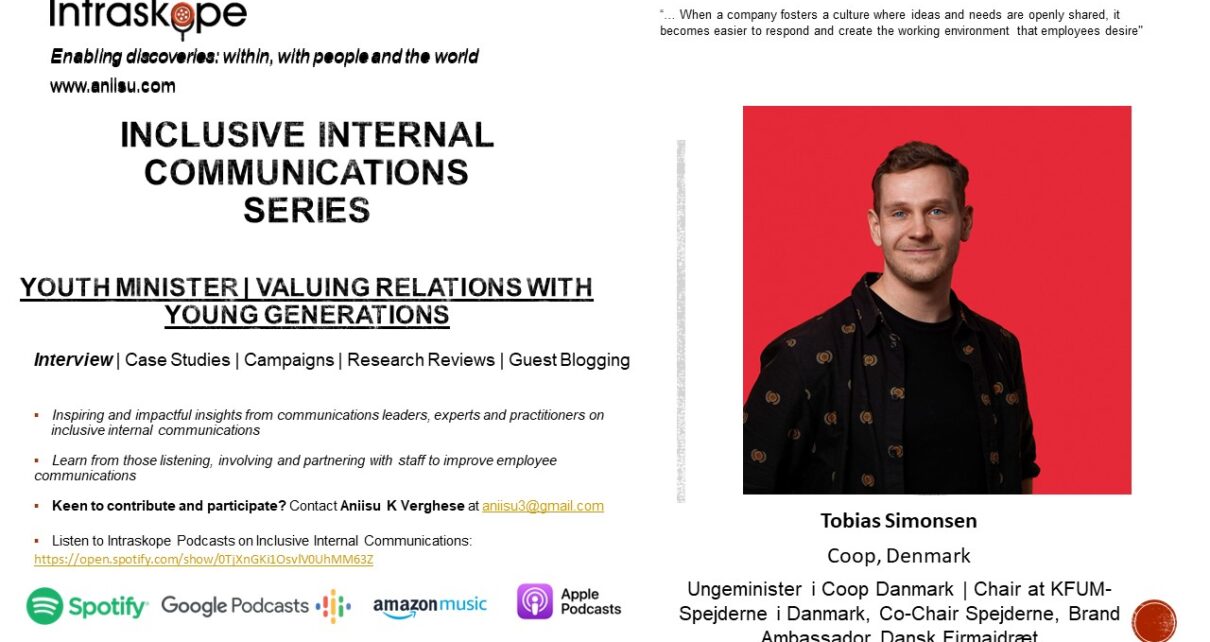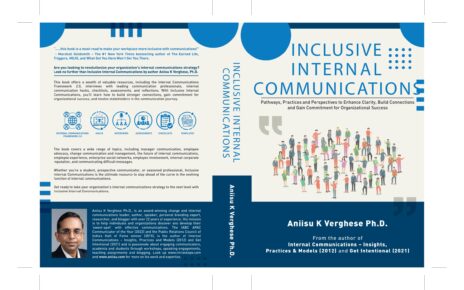Good day, readers! Today, I have the pleasure of sharing an interview with Tobias Simonsen, a key figure in COOP Denmark’s inclusive internal communications practices. Tobias serves as the Youth Minister, a role dedicated to prioritizing inclusion and engagement among the organization’s 25,000 young employees aged 15 to 25 across nearly 1,000 locations. Let’s delve into the fascinating insights Tobias has to offer.
1. How does your organization prioritize inclusion through employee communications?
Tobias: At COOP Denmark, we prioritize inclusion by ensuring that the voices and desires of our young colleagues are heard and acted upon. To support unity and attractiveness within our organization, we held elections in 2022, and the young employees had the opportunity to elect their own Youth Minister. This position is elected for approximately 3-5 years and is responsible for representing the young colleagues.
The Youth Minister works closely with an advisory board comprised of colleagues from different shops. We hold monthly online meetings to discuss various matters. The advisory board is elected for one year, after which they become part of our alumni community, and a new advisory board is elected, consisting of around 15 members.
The main purpose of the Youth Minister is to listen to the young colleagues’ needs and desires and take action to implement them. The Youth Minister collaborates with the HR director and other departments to address these issues. Currently, the young colleagues are looking for better training and onboarding, acknowledgment for their work in retail, and more social activities.
2. What do you do to listen, involve, partner, co-create, value talent, recognize, and celebrate employee participation in organizational communication?
Tobias: To ensure that our young colleagues have a platform to express their thoughts and ideas, the Youth Minister maintains social media channels under the handle @ungeministeren. This enables direct communication between the youth and the Youth Minister. Additionally, I personally visit the shops, organize events such as bars and sports activities, and create spaces where our youth already gather. This allows me to be visible and actively engage with them.
The core objective of the Youth Minister initiative is to ensure that our young colleagues feel seen and that their input is considered. It’s crucial for the Youth Minister to implement their ideas, as this demonstrates that we take them seriously. By doing so, we motivate more colleagues to share their own ideas.
When a company fosters a culture where ideas and needs are openly shared, it becomes easier to respond and create the working environment that employees desire.
3. Please share an example or two of how this works in practice.
Tobias: Certainly! Let me give you a couple of examples. In one case, we received a request for a monthly bar at our headquarters. We organized the bar as per their desire, and during these events, I have conversations with younger colleagues. Through these interactions, I’ve been able to arrange opportunities for them to join desired company sports teams and more.
In another case, a colleague texted me after reading a debate article I wrote for a national newspaper. She felt proud and connected to the company because the article addressed the aspiration of creating a better world by acknowledging retail as an inspiring industry. It’s heartening to see such positive responses and the impact it has on their engagement.
4. What changes have you made in your communication culture to empower staff to contribute as partners?
Tobias: Creating natural spaces for colleagues to connect has been pivotal. I encourage the formation of sports teams, bars, advisory boards, and other club structures. I specifically look for colleagues who are sociable and adept at fostering a sense of community. When such individuals participate, others are likely to follow suit because they enjoy their company, making the activity itself less relevant. By producing tangible results from the ideas we receive, we motivate more colleagues to share their own thoughts, as they see that their ideas hold weight.
5. What policies and governance framework do you have in place that enables staff to go over and above at the workplace for communications?
Tobias: We have internal communication channels within the organization that facilitate effective communication. Additionally, the Youth Minister utilizes social media platforms to connect with colleagues. We also leverage the existing club structures to disseminate information and encourage participation.
6. What incentives and recognitions do you use to encourage staff to contribute even more to communication?
Tobias: I ensure that every idea shared is taken seriously and valued. By fostering a working culture where colleagues feel comfortable sharing their desired working environment, and by actively acting upon their ideas, employees have the opportunity to bring their whole selves to work. When their desires for a conducive working environment are considered, it cultivates happiness and a sense of co-creation among the workforce.
7. What changes to the language you use allow you to be more inclusive in communication practices?
Tobias: Language plays a crucial role in promoting inclusivity. I refer to past activities as great experiences, giving credit to those who provided the ideas we implemented. I acknowledge that we are all different, with diverse needs and perspectives. By embracing this diversity, we foster an inclusive environment.
8. How do you bring synergy with existing engagement practices to surface staff’s talent with inclusive internal communications?
Tobias: While I occasionally introduce new initiatives, my primary focus is on understanding what is already happening within the organization and creating awareness around initiatives in which employees can participate or take pride. By highlighting these activities, I bring attention to the talent and potential that exists among our staff.
Editor’s notes: I found these insights into COOP Denmark’s inclusive internal communications practices very valuable. It’s inspiring to see how the organization prioritizes the voices of its young employees and fosters a culture of active participation. I hope this interview serves as a valuable resource for my readers in their own internal communication endeavors. If you have heard of other fascinating stories of Inclusive Internal Communications, do reach out to me or introduce people who run these initiatives. I will be happy to feature them on the blog and my future podcasts.



